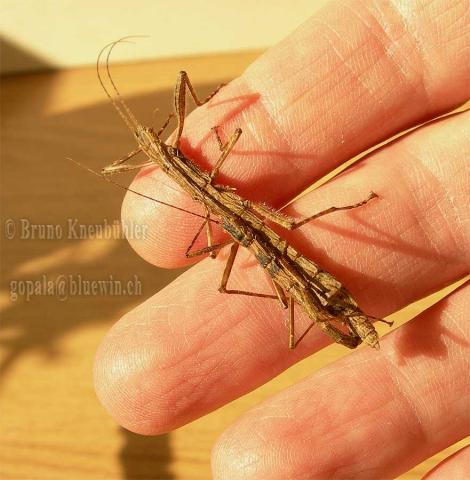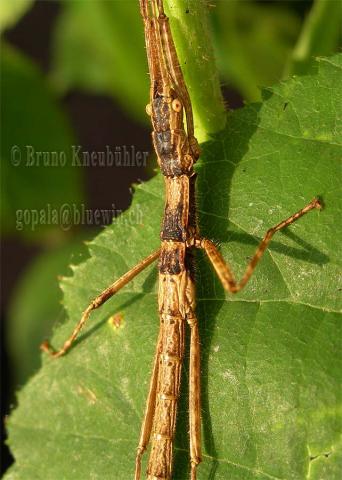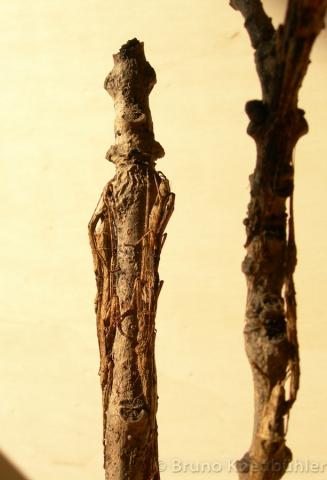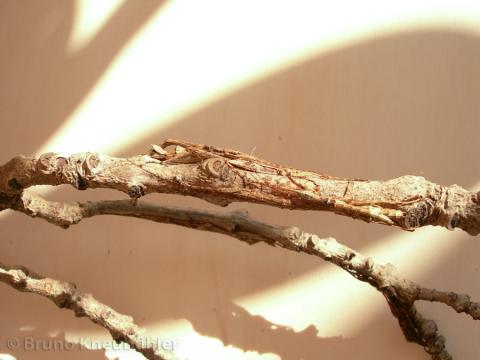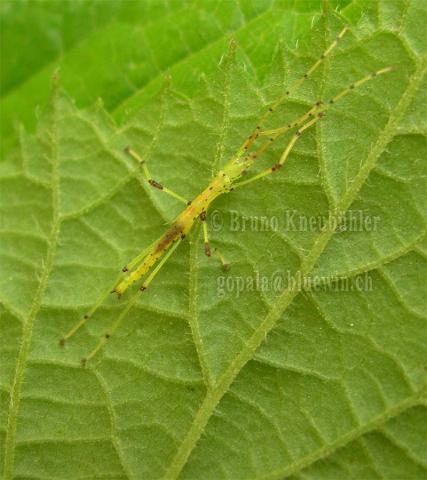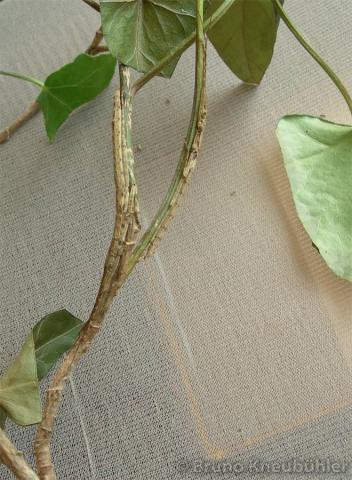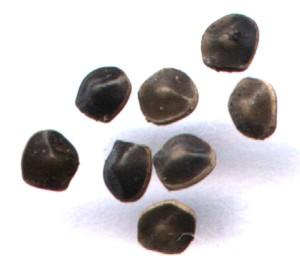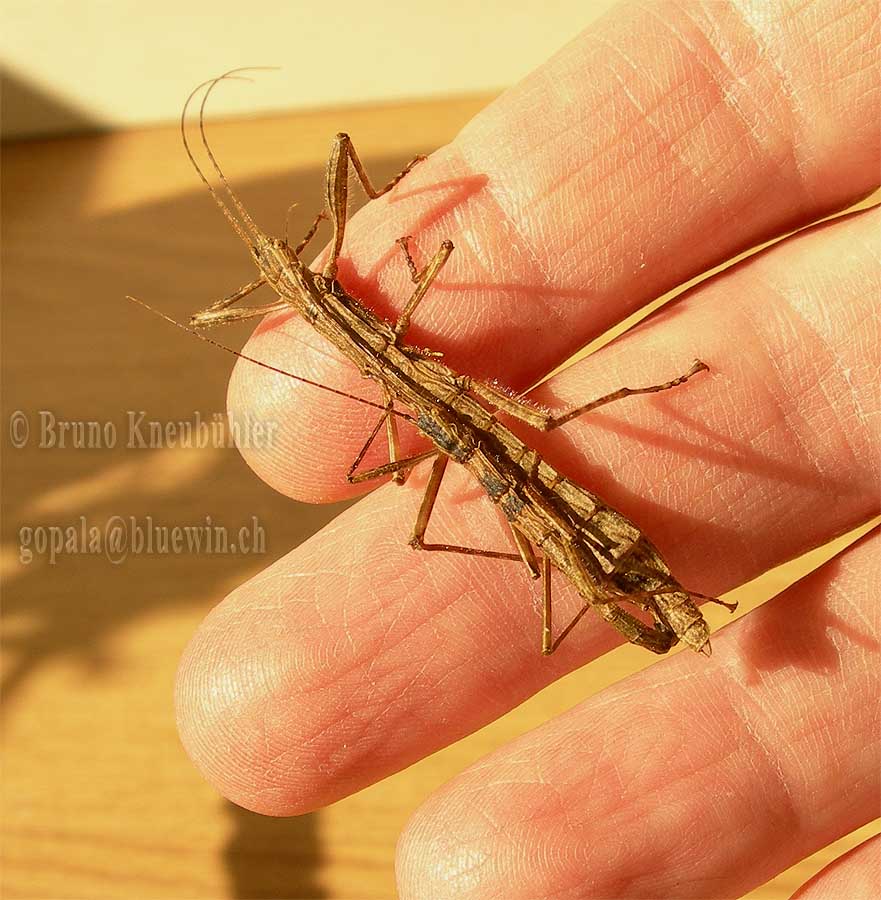
Genus
Stock
Culture status
Unknown
Foodplants
Epilobium sp.
Oenothera biennis
Breeding notes
(by Bruno Kneubühler)
General Notes
- this species is being cultivated since many years
- one of the smallest phasmid species in culture so far
Females
- about 4,5 cm long
- females are coloured in different brown shades – from light brown to dark brown
- thus it is not easy to spot them on brown bark
- very characteristic is that their abdomen from the 5th - 7th segment has a swollen appearance, both laterally and dorso-ventraly
- their antennae are much longer than the forelegs
- not winged
Males
- much smaller than the females, only about 30 mm long
- males are also coloured in shades of different brown. They have some characteristic black markings on the back of their head and thorax
- their antennae are also much longer than the forelegs
- not winged
Eggs
- lentils-like shaped
- about 2 mm long, 2 mm wide and 1mm thick
- dark brown, almost black in colour
- a light brown band along the whole edge of the egg
- the area of the capitulum is flatened
- incubate the eggs on a damp substrate (e.g. sand)
- incubation at room temperature (around 20°C) takes only about 2,5 months and hatching ratio is high
Breeding Notes
- this species is easy to breed, if you have their foodplants
- freshly hatched nymphs are very small, only about 9 mm in lenght
- provide nymphs and adults with a small and escape-proof cage (e.g. Faunaboxes are perfect)
- nymphs grow up easily with almost no loss in a humid atmosphere
- neither nymphs nor adults are sprayed with water
- a wet paper towel on the bottom of the cage provides enough humidity
- they do not need large amount of food plants, especially when young
- nymphs and adults can move very quickly. When handled they can react very disturbed, wildly wriggle about and then quickly run to a shelter and freeze there. Sometimes they even jump for a few centimeters when handled. So changing their foodplants and cleaning their cage can be a challange
- usually they are not on their foodplants during the day
- provide them with barky twigs, then they will hide on the twigs during the day. And you will be surprised at how perfectly they can snuggle to the twig, so that they are almost invisible – an astonishing camouflage
- when disturbed, this species can spray a defensive liquid from two glands behing the head (on the prothorax). This defensive spray has a very pungent smell and if it gets into the eyes they will burn quite a bit for some minutes. Therefore this species should be handled with care. The defensive spray is subjected to investigation at the moment
- females take about 3,5 months to become adult, males about 2,5 months
- about 3 weeks after the final moult females will start to lay eggs, about 14 eggs per week at their peak
Some basics of phasmid breeding
- our detailed notes on how to successfully breed phasmids are an integral part of this care sheet
- keep just one species per cage
- use the full and correct culture name with provenience affix in brackets, yet never use common names. For example Trychopeplus laciniatus "Monteverde", but not "mossy mountain phasmid". This supports the serious breeder's efforts to keep cultures pure. Informations on why and how to keep cultures seperate and pure
- try to keep (day) temperatures below 28°C, while a nocturnal temperature drop is natural and advisable
- do not spray too often, phasmids are no fish
